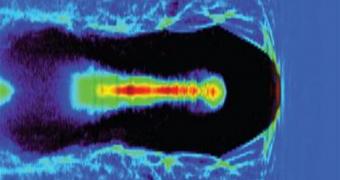Researchers are currently working on developing new types of breakthroughs in the field of computer simulations, given the potential these technologies have for furthering science. At this time, they believe they might have found a way to improve advanced laser experiments.
One of the main problems plaguing investigations into how lasers hit plasmas is the fact that the computer simulations needed to conduct the tasks can simply get too intense at times.
This means that the supercomputers in charge of carrying out the calculations jam, and researchers don't have many options in fixing this issue.
This is why they are now turning to teachings derived straight from fames physicist Albert Einstein's Theory of General Relativity, for inspiration in eliminating this technological roadblock.
Experts have a long time ago recognized the need of having innovation in the field of conceptually designing experiments and simulations, rather than then need to have more advanced and powerful supercomputers.
In other words, all it takes for a complex simulation to succeed may be a change in the reference frames we are now using to test existing theoretical models.
In the particular case of laser experiments, making advancements in understanding how lasers and plasma interact may have numerous benefits, experts say.
Some of these advantages include “proton therapy for the treatment of cancers, materials characterization, radiation-driven chemistry, border security through the detection of explosives, narcotics and other dangerous substances, and of course high-energy particle physics,” researchers say.
The experts were a part of a panel that released a paper entitled “Principles and applications of compact laser–plasma accelerators” in a 2008 issue of the esteemed scientific journal Nature Physics.
But modeling the behavior of these so-called laser-plasma accelerators is the first step in making them a reality. Many years will pass until machines the power of the LHC will be found in average homes.
Experts now propose that we change our reference point in such experiments, so as to make them clearer. They are proposing we look at the issue from the perspective of the plasma itself.
Until now, we've been conducting such experiments from the vantage point of someone outside the experiments, but this carried a large downfall – the laser pulses in the studies were too short.
By taking on the point of view of the near-stationary plasma used in experiments, the researchers would basically be piggybacking on a component of the experiment that is traveling very fast.
In the laser-plasma system, the laser can be interpreted as stationary, and the plasma as traveling towards it at nearly the speed of light.
This has the immediate effect of making the laser beam longer, and therefore easier to simulate via mathematical equations.
Researchers believe that the resulting algorithms would be up to 10,000 times faster than today's most advanced, Technology Review reports.

 14 DAY TRIAL //
14 DAY TRIAL //